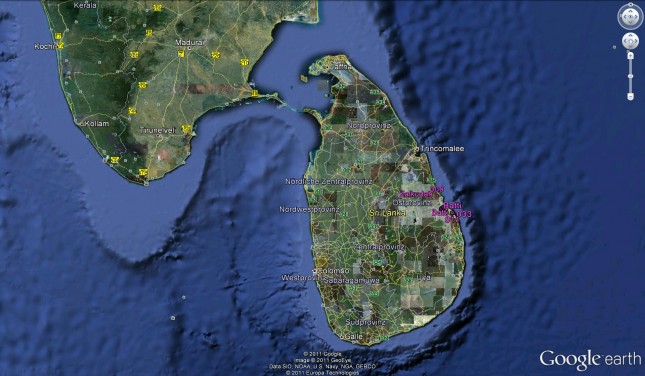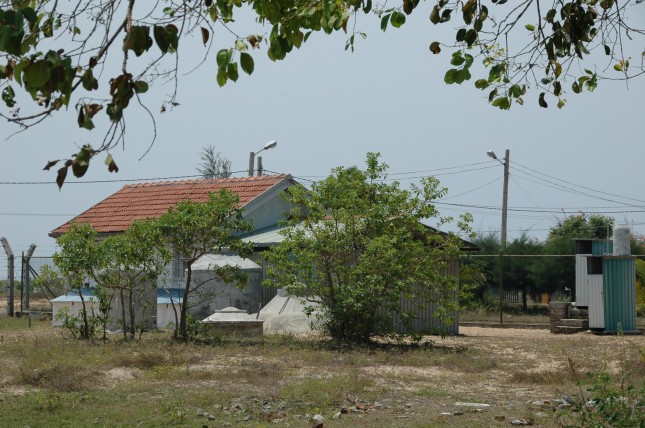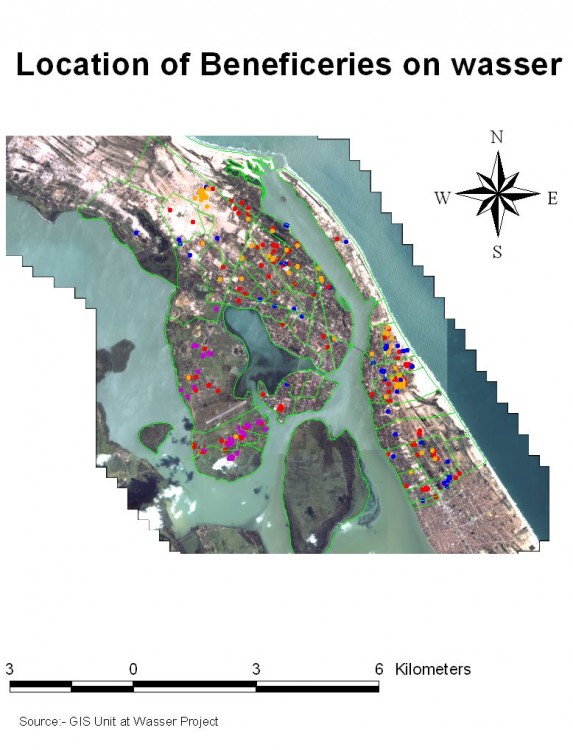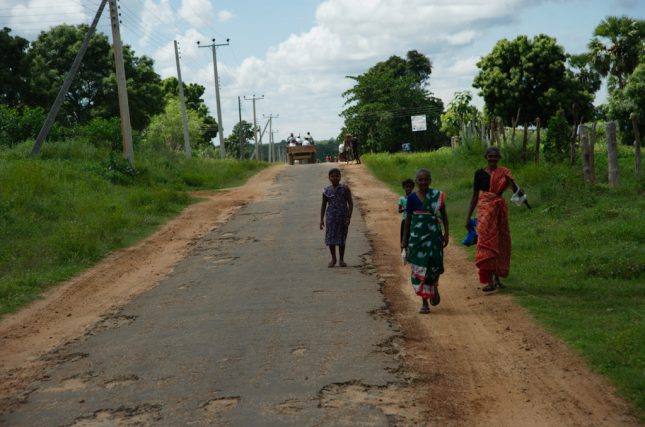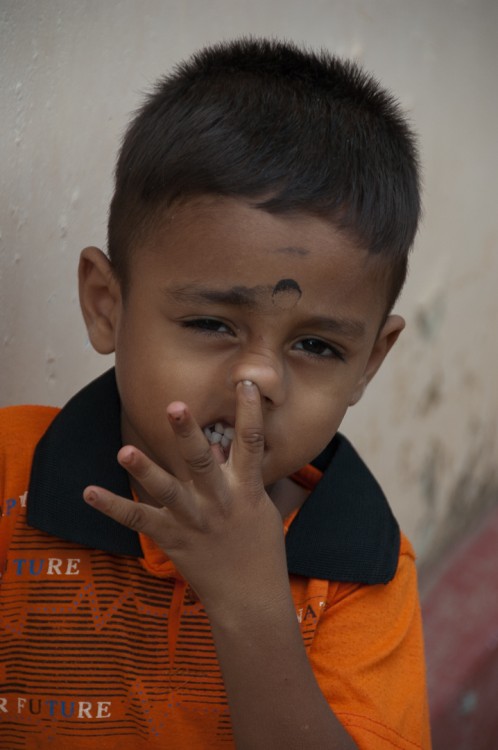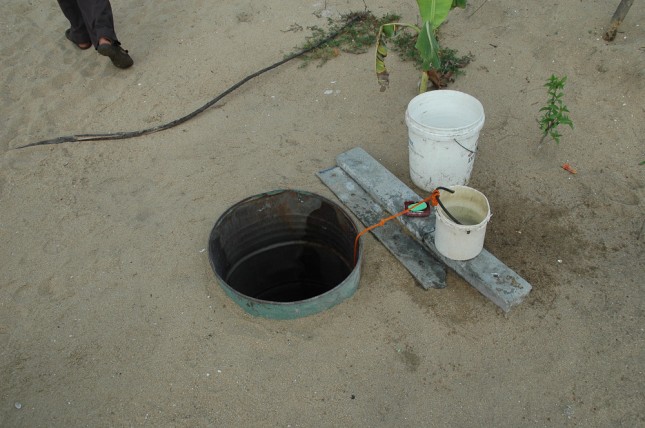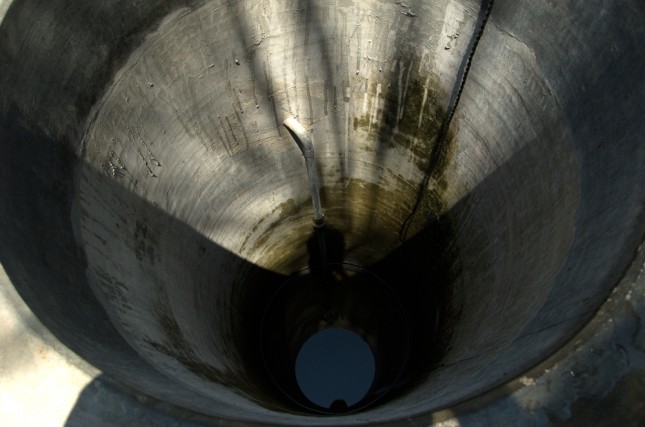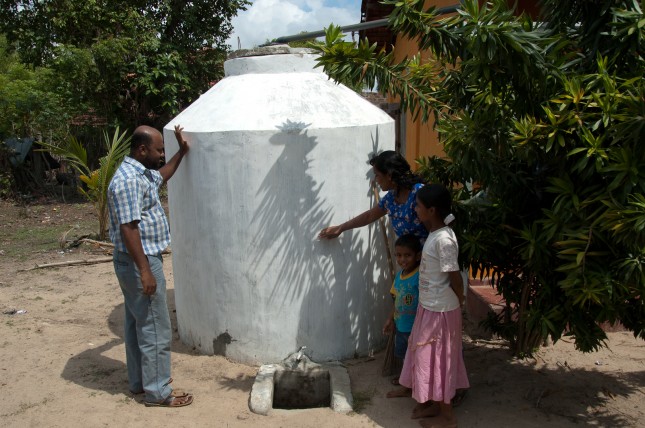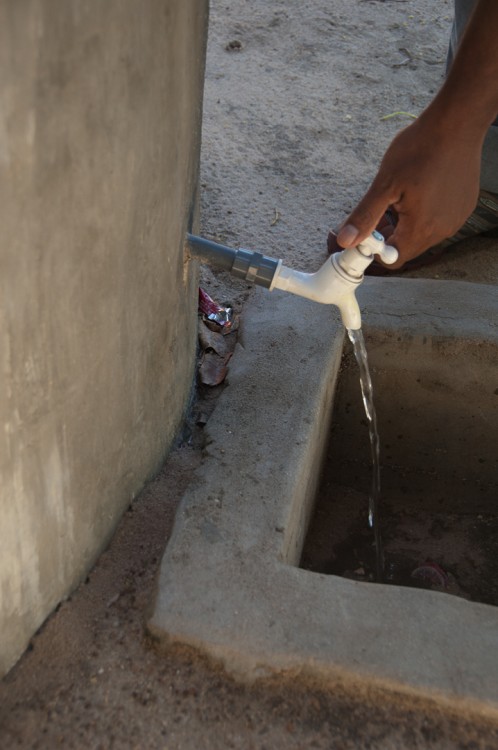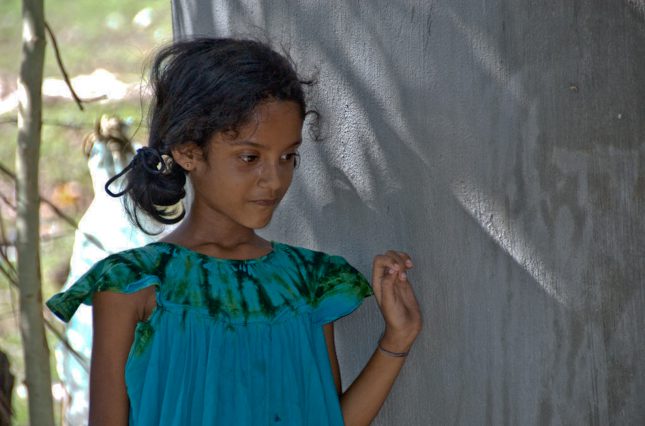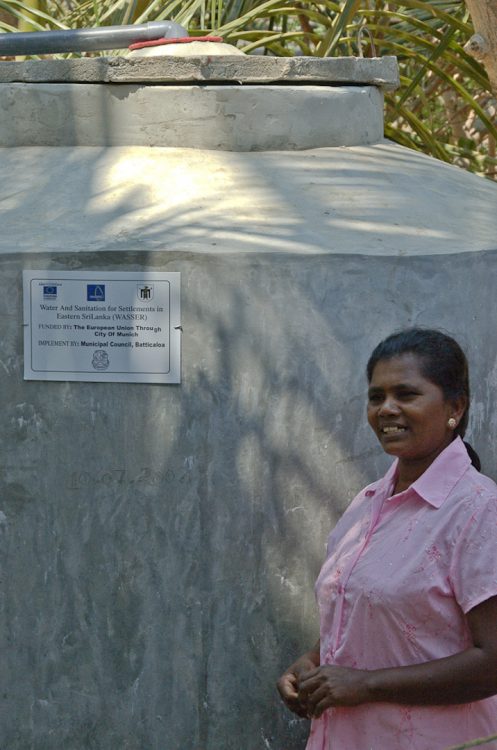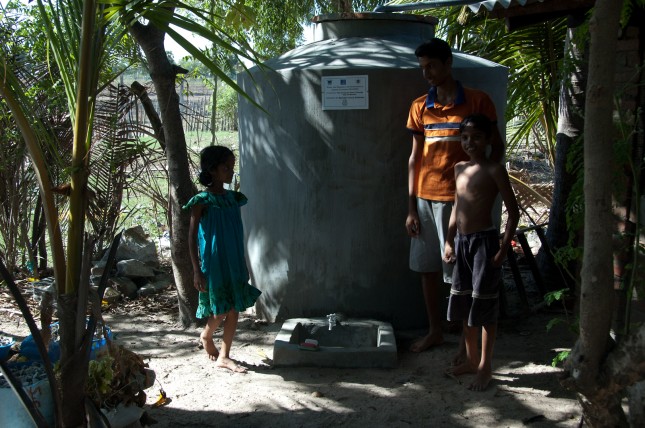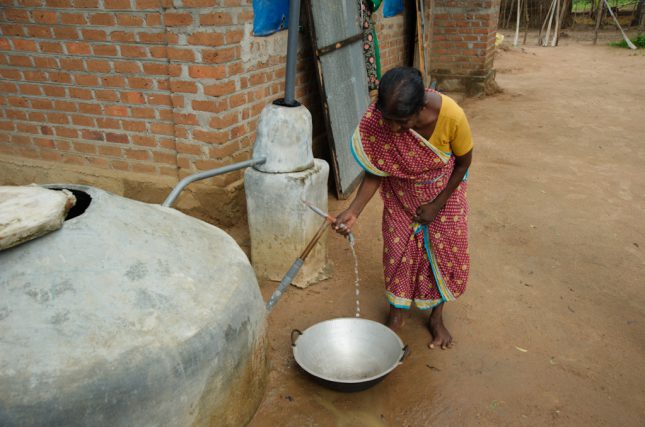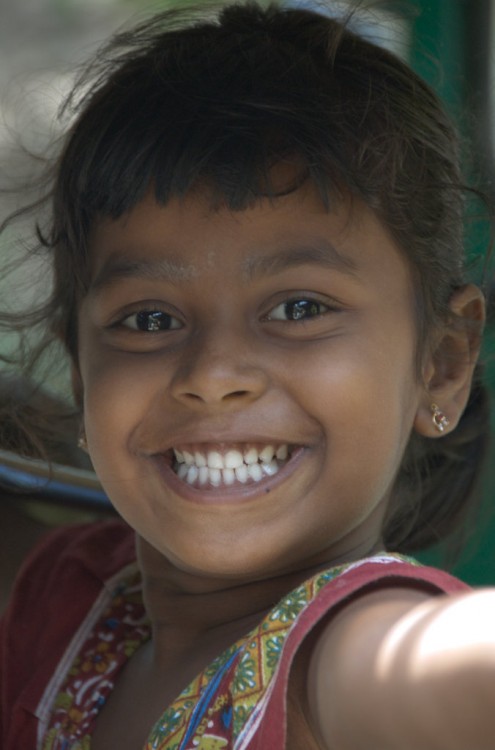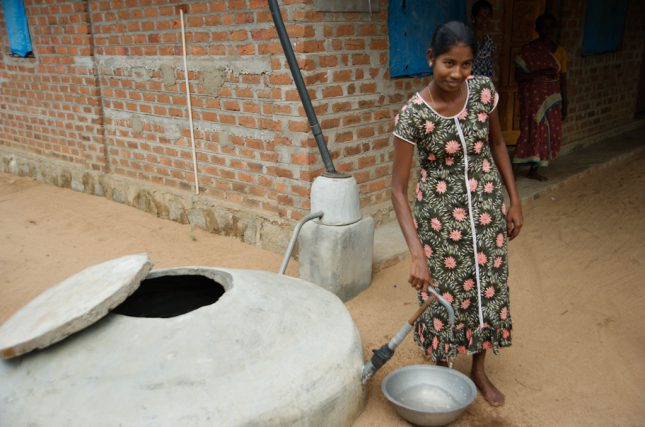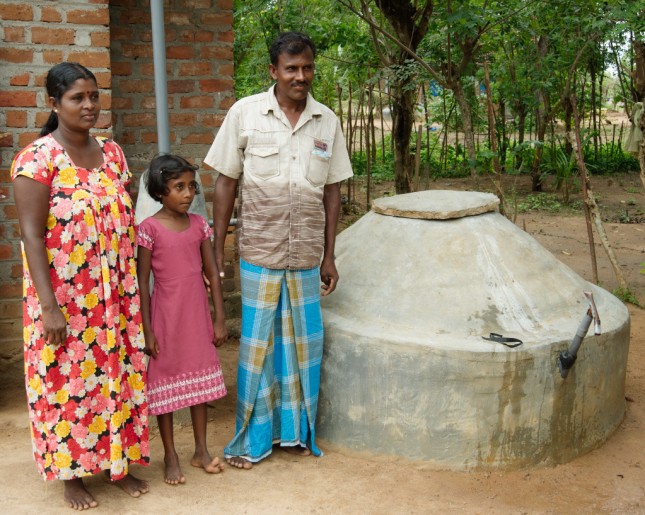English
EMAS works in Sri Lanka since the Tsunami in the year 2004 continously in different projects until now.
The Tsunami of December 2004 has been widely acknowledged as the largest, most devastating natural catastrophe in the history of Sri Lanka. The country was severely affected in terms of cost of life, infrastructure and economic assets. The tsunami destroyed most of the commercial infrastructure as well as private construction.
Eastern province was one of the areas which incurred severe loss and damage. The water supply was greatly affected and commonly used dug wells were heavily contaminated. The most vulnerable segments of the population the children, aged and sick persons were the most affected.
In certain areas of the Eastern Province water was not only non available due to lack of pipe-borne supply but also due to the fact that the ground water level was very low. Dug wells were expensive and families had to travel considerable distance to collect water.
Deutsch
EMAS arbeitet seit dem Tsunami im Jahre 2004 kontinuierlich mit verschiedenen Projekten im Osten von Sri Lanka,
vornehmlich in der Umgebung der Städte Batticaloa und Kalmunai. Im Vordergrund steht die Trinkwasserversorgung der ärmeren Bevölkerung. Unmittelbar nach dem Tsunami musste den vom Tsunami betroffenen Familien geholfen werden, mittlerweile stehen nun die immer noch unter den Folgen des Bürgerkriegs leidenden Familien im Zentrum unserer Arbeit.
Im Rahmen der verschiedenen Projkte an denen EMAS unmittelbar beteiligt oder diese komplett finanziert hat konnte die Trinkwasserversorgungung bzw. die Abwasserentsorgung von ca. 500-600 Familien drastisch verbessert werden .
Darüber hinaus wurde ein dauerhaftes Trainingszentrum in Batticaloa, sowie ein auf die Projektlaufzeit von „WASSER“ bezogenes Trainingszentrum in Kalmunai eingerichtet. Hier wurden insgesamt bisher (Stand 05. 2012) ca. 150 Einheimische zu Fachkräften in der Micro-Trinkwasserversorgung ausgebildet.
2004-2006
The „Buddhistisches Haus“ – EMAS Drinking Water Development Project
Improvement of the water supply through the training of well drillers and pump makers in Sri Lanka.
In order to alleviate the problems of drinking water and create self-sufficiency in drinking water in rural areas affected.
The „Buddhistisches Haus“ has initiated a project to install small, low technology hand operated pumps for the provision of drinking water from narrow bore wells. Phase One comprises the initial demonstration and training of local participants in the construction of pumps and their installation by a team of experienced well drillers from South America, and the transfer of technology to local Sri Lankan well drillers. Phase Two comprises installation of pumps on a larger scale, combined with limited training of more well drillers. On the successful completion of Phase Two, a possible third phase could be envisioned, comprising the construction of a permanent well drilling training centre capable of providing
Our training to Sri Lankans in the construction and installation of pumps follows the lines of the highly successful training schools set up by EMAS in South America. The EMAS training team arrived in Sri Lanka on 27th January 2005.
„Das Buddhistische Haus“ – EMAS-Projekt zur Verbesserung der Trinkwasserversorgung
Die Organisation „Das Buddhistische Haus“ hat ein Projekt zur Selbst-Versorgung der örtlichen Bevölkerung mit Trinkwasser initiiert. Die Trinkwasserversorgung wurde mit der bewährten, sehr einfachen aber wirkungsvollen EMAS-Technologie verbessert.
Im Vordergrund stand auch hier schon die Ausbildung von Ortsansässigen zu Brunnenbauern, bzw. ein Methodentransfer durch südamerikanischen Brunnenbauer nach Sri Lanka.
Post Tsunami Project City of Munich – „Munich helps Batticaloa“
In this project the EMAS- Technology was also strongly involved. The project-partners used the EMAS-technology to improve the drinking-water-supply of many Sri Lankan families.
Post Tsunami-Projekt der Landeshauptstadt München – „München hilft Batticaloa“
Auch hier wurde die EMAS-Technologie zur Verbesserung der Trinkawasserversorgung vieler Familien eingesetzt.
2006-2009
The EMAS Training Center in Batticaloa
The EMAS training center in Batticaloa was erected and has been started running during the WASSER project 2006-2009. Now it’s in a benificial ownership of the City of Batticaloa.
Das EMAS Trainingszentrum Batticaloa
Das EMAS TrainingCenter in Batticaloa wurde im Rahmen des EU-Projekts ‚WASSER‘ auf dem Gelände der staatlichen Wasserwerke erbaut und anschließend in die Obhut der Stadtverwaltung von Batticaloa übergeben. Allein Im EMAS-Trainingzentrum Batticaloa wurden inzwischen knapp hundert Einheimische – darunter auch Jugendliche- zu Fachkräften in der Micro-Trinkwasserversorgung ausgebildet. EMAS legt dabei größten Wert auf die Hilfe zur Selbsthilfe.
The WASSER project in Eastern Sri Lanka
The WASSER (Water and Sanitation for Settlements in Eastern Sri Lanka) project was a partnership within the framework of the Asia Pro Eco IIb Programme of the European Union between the cities of Munich (G), Batticaloa (SL), Kalmunai(SL) and the NGO EMAS International from 2006 to 2009. The partners had been already associated with each other from previous activities of the Asia-pro-Eco MILES (Managing Information Locally for Environment of Sri Lanka) project and the post-tsunami activities of Munich in Batticaloa and Kalmunai. WASSER is focused on water and sanitation. The main objectives of the project were as follows:
- Planning and set-up of sewerage systems in tsunami-affected areas of Batticaloa and Kalmunai in collaboration between the National Water and Drainage Board and the Municipal Councils of Batticaloa and Kalmunai.
- Constituting a well driller school in Batticaloa in order to provide affordable systems for private wells connected with advanced information about water related hygienic issues and human behavior
- Creating job opportunities through training in the field of well drilling
- Enhancing the municipal councils’ capacities in the field of environmental planning and management and environmental management information systems. Set-up of cadaster for utility planning.
- Using this information for risk assessment and disaster mitigation purposes.
The WASSER Project has provided support to the urban poor in the water and sanitation field, has provided job opportunities and had strengthened the management and technical capacities of the two local authorities, the Batticaloa and Kalmunai Municipal councils. The ultimate beneficiaries will be the tsunami affected individuals living in poor communities.
Results:
Batticaloa
- Construction and Implementation of the EMAS Water and Sanitation Training Center
- Training for nearly 100 persons
- Implementation of water and sanitation infrastructure in Batticaloa. Access to the sewerage system for roughly 400 families. Supplementary drinking water supply through tube wells for more or less 200 families
Kalmunai
- Sanitation condition improvement at the coastal Lagoon at Sainthamaruthu village. So far 50 families received improved septic system. Construction plant works completed. Yet to install the equipments (Purchase orders were placed)
- Provision of drinking water supply for the Tsunami affected and poor. Around 700 connections were paid , 600 families are using the facility up to now
- Construction of toilets for the Tsunami affected and poor families: 50 completed
- Environmental Planning and Management. Participatory City Environmental planning and Setting up of EMIS( Environmental Management Information System) City profile • City consultation and working group.• GIS training to 8 Municipal staff.• Base map was completed.• Thematic data is being collected • 150 WASSER family details were entered..
2006-2009
Das Projekt WASSER in Ost-Sri Lanka
Das EU-Projekt WASSER (Water and Sanitation for Settlements in Eastern Sri Lanka) war ein Gemeinschaftsprojekt der Landeshauptstadt München zusammen mit EMAS International und den Sri-Lankischen Städten Batticaloa und Kalmunai im Rahmen des Asia Pro Eco IIb Programm der Europäischen Union von 2006 bis 2009.
Das WASSER-Projekt hatte folgende Ziele:
– Wiederherstellung oder Neuaufbau einer Wasserversorgung bzw. Abwasserentsorgung in den Städten Batticaloa und Kalmunai
– Aufbau eines Umweltinformationssystems in den beiden Städten
Die genannten Partner haben schon seit 2004 in verschiedenen Projekten mit dem Ziel der Verbesserung der Trinkwassersituation im Osten Sri Lankas zusammen gearbeitet, so zum Beispiel in einem Post-Tsunami Projekt der Stadt München.
Im Rahmen des WASSER Projektes kamen die weltweit erprobten EMAS -Technologien in der vom Tsunami und Bürgerkrieg betroffenen Region zum Einsatz.
Die Region Batticaloa und Kalmunai liegt auf einem sehr dicht besiedelten, schmalen Küstenstreifen im Osten Sri Lankas. Durch den Tsunami wurden praktisch allle küstennahen Häuser zerstört und die Familien in den westlichen Teil des Küstenstreifens umgesiedelt. Dort lebten zudem noch rund 200 000 Flüchtlinge in ca. 100 Zeltcamps die vor den Kampfhandlungen im Hinterland zwischen Separatistentruppen und Regierungstruppen geflohen sind. In dieser zum Teil extrem hohen Bevölkerungsdichte gab es keine funktionierende Wasserversorgung. Trinkwasser wurde in Tanklastwägen angekarrt und das Brauchwasser aus oberflächennahen Schacht –oder Bohrbrunnen entnommen. Diese befanden sich wiederum in bedenklicher Nähe der Versitzgrube des Plumpsklosetts.
Eine unhaltbare hygienische Situation war die Folge.
Ergebnisse (mit EMAS-Bezug)
Batticaloa
- ca. 200 Familien mit einer eigenen Trinkwasserversorgung (tube wells) ausgestattet
- ca
- Aufbau eines EMAS Trainingszentrums
2009 to 2012
EMAS-Projects in Eastern Sri Lanka
The EMAS project area 2009-2012 in Eastern Sri Lanka
In following images the individual objects (RWHS and Tube Wells) are marked in purple with exact coordinates in Google Earth
Das EMAS Projektgebiet 2009-2012 im Osten Sri Lanka’s
In den nachfolgenden Google Earth-Satelitenbildern sind die einzelnen Objekte (RWHS und Bohrbrunnen) koordinatengenau dargestellt
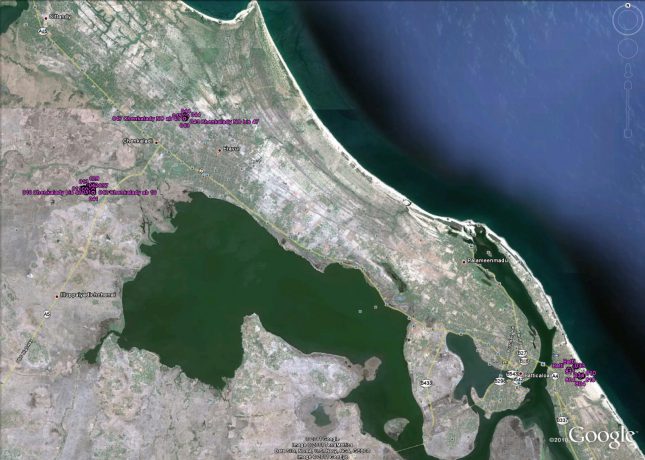 Entire project territory
Entire project territoryGesamtgebiet
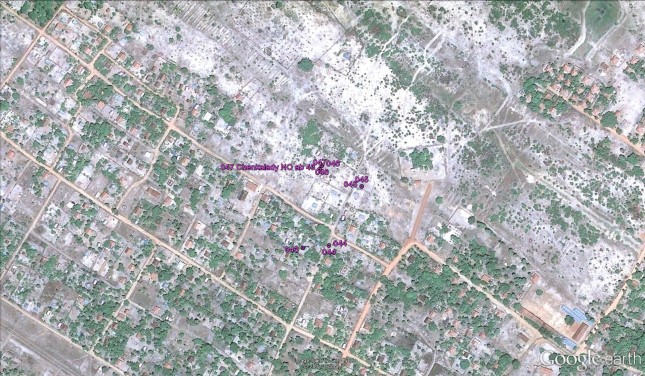
The NorthEastern part in detail
Der Nord-Ost-Bereich im Detail

The north western part of our project area in detail
Der Nord-West-Bereich im Detail
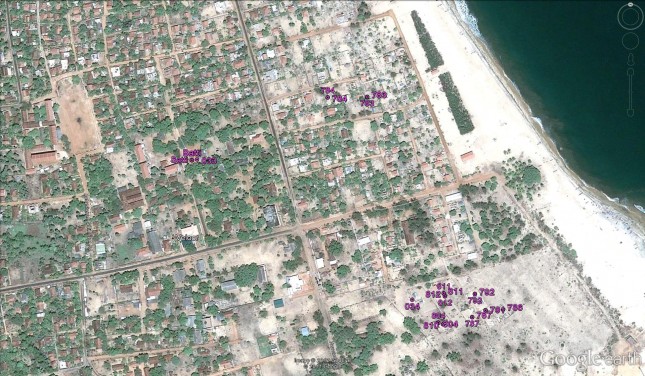
The project area in the surroundings of Batticaloa
Der Projektbereich rund um Batticaloa
In this period EMAS has funded two projects in Eastern Sri Lanka.
NGO-EMAS International introduced Rain Water Harvesting for domestic use under the project Water And Sanitation for Settlements in Eastern Region (WASSER) Sri Lanka which was implemented in 2005-2006 with EU funding. EMAS provided training to selected officials in the drilling of tube wells, construction of ferro-cement tanks, etc. based on variety of simple technologies. Based on this, it was accepted that Rainwater Harvesting would be an effective and expedient supportive option to meet the needs of water supply to low income households in areas where they have no access to drinking water.
Following discussion held with local government officials and on site visits made, it was decided to select two areas where there is a need for drinking water and where the families are poor. To maintain ethnic balance a Tamil area and Muslim area were selected.
IDP (Internally displaced Person) project in the area of Chenkallady
This project is running since May 2009. The project targets the improvement of drinking water supply for returned IDPs in Chenkallady (a small village northern Batticaloa) by building of wells and rainwater harvesting tanks, funded through EMAS, in a partnership with the Office of the Assistant Commissioner Local Government (ACLG) in Batticaloa. The target group are the people and public institutions affected by the civil war and/or poverty. Special attention was given to gender, ethnic and religious issues.-Rainwater Harvesting Tank construction and Tube Well Drilling is carried out in three stages(steps). These are –
Stage – 1 Training for Beneficiaries
Stage – 2 Foundation Work
Stage – 3 RWHT Construction or Tube Well Drilling work complete
Stage – 4 Roof plumbing & Connection Completion
The overal budget was 20.000.-€
sponsored by honorable peoples from the bavarian town Holzkirchen
Meanwhile this project has been finished with an excellent result:
– 71 Rainwater Harvesting Systems (RWHS) have been installed and
– 75 Tube wells have been completed
This means that in minimum 146 Sri Lankan families in this area now are provided with clean drinkable water!
Rebuilding Community Infrastructure and Shelter in Disaster Affected Areas of Batticaloa –
Construction of Rainwater Harvesting Systems in Hijranagar and Koolavady
The project proposes Rainwater Harvesting as an effective and expedient supportive option to meet the needs of water supply to low-income households in areas where they have no access to piped drinking water. The project is implemented in the north of Batticaloa, covering two areas viz. Tamil and Muslims. The target group are people affected by the war (IDP’s), tsunami and/or poverty. Special attention is given to gender and ethnic and religious issues.
Hijranagar and Koolavady were the small villages selected. Hijranagar is in Oddamavady and Koolavady is in Valaichchenai. Low income families live in these areas and there is an acute shortage of water mainly due to the fact that there is no pipe-borne water supply and wells are also a scarcity due to lack of water. Fifty families from Koolavady and forty families from Hijranagar were selected as they were poor and had no access to water. The poor families were selected from this area through a process of discussion with the Pradeshiya Sabha (Local Authority) officials and the Women Rural Development society (RDS) of Koolavady and Hijranagar.
Our project partners in this work where the City of Munich and UN Habitat.
Funds for the the project was from EMAS-International and the project was implemented through UN-Habitat.
The total budget was about 31.500.-€
Meanwhile this project is also finished with an excellent result:
Rainwater Harvesting Tank construction is carried out in four stages(steps). These are –
Stage – 1 Training for Beneficiaries
Stage – 2 Foundation Work
Stage – 3 RWHT Construction work complete
Stage – 4 Roof plumbing & Connection Completion
Now 90 and more families do have an easy and shortway access to hygienic drinkable water! It has to be highlighted in this project that also 90 persons are trained to build more Rainwater Harvesting Sytems with the EMAS technology! This is a most important fact for the dissemination of this knowledge in an easy but perfect technology according to the local needs in Eastern Sri Lanka!
EMAS-Prokte in Ost- Sri Lanka im Zeitraum
2009 bis 2012
In diesem Zeitraum wurden durch EMAS zwei Projekte im Osten Sri Lanka’s finanziert.
IDP (Internally Displaced Person)-Projekt im Gebiet Chenkallady
Das Projekt hatte die Versorgung von Bürgerkriegsflüchtlingen mit Trinkwasser zum Ziel. Nach der Rückführung der Flüchtlinge aus den Flüchtlingscamps in ihre frühere Heimat war zunächst seitens der Behörden nur eine Wasserversorgung mittels Wassertankwagen vorgesehen.
EMAS ging in diesem Fall zweigleisig vor. In einem großen Gebiet war es auf Grund der geologischen Gegebenheiten nicht möglich Brunnen zu bohren. Hier wurden dementsprechend oberirdische Regenwassersammelsysteme (RWHS) gebaut.
Projektpartner war hier das ACLG (Assistant Commissioner of Local Government) in Batticaloa.
Insgesamt hatten wir im Verhältnis zum äußerst knappen Gesamtbudget ein hervorragendes Ergebnis.
Mit nur 20.000.-€,
gespendet von großzügigen Sponsoren aus Holzkirchen/Bayern
wurden
– 71 Regenwassersammelanlagen gebaut und
– 74 Bohrbrunnen eingebracht
Damit konnten wiederum mindestens 146 Familien mit hygienisch einwandfreiem Trinkwasser versorgt werden! „Mindestens“ weil viele Trinkwasseranlagen in der Realität von mehreren Familien genutzt werden.
Bau von Regenwassersammelsystemen in Hijranagar and Koolavady
Ziel auch dieses Projektes war der Aufbau eines effizienten Systems zur Selbstversorgung ärmerer Bevölkerungsschichten in de nördlich von Batticaloa gelegenen ehemaligen Bürgerkriegsgebieten mit Trinkwasser. Das Projektgebiet hatte lange Jahre unter den verheerenden Wirren des Bürgerkrieges gelitten. Neben den vielen Toten in der Zivilbevölkerung war vor allem auch die Zerstörung jeglicher Infrastruktur zu beklagen. Die Wasserbrunnen waren entweder zerstört oder durch versteckte Minen unbrauchbar gemacht.
Auch hier wurde wie in den bisherigen anderen Projekten besonderer Wert auf ethnische und religiöse Ausgeglichenheit bei den „Benificieries“ (auf beamtendeutsch „Zuwendungsempfänger“) geachtet. Tamilen und Muslims erhielten zu gleichen Teilen eine Trinkwasserversorgung.
Projektpartner waren hier UN-HABITAT und die Landeshaupstadt München.
Wie im vorigen Projekt wurde schrittweise vorgegangen:
– Training der Benificieries
– Der Baugrund wird vorbereitet
– Die Zisterne oder der Regenwassertank (RWHT) werden gebaut
– Die Regenwassersammlung auf dem Dach wird eingerichtet
Mit nur 31.000.- wurde für mehr als 90 Familien einen unmittelbaren Zugang zu sauberem Trinkwasser ohne hygienische Dauerprobleme ermöglicht!
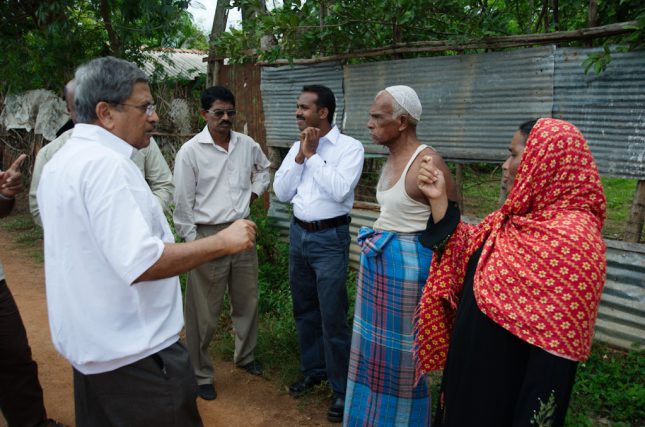
Dr. Fahmy Ismail from UN-Habitat introduces the peoples of Hijranagar – Dr. Fahmy Ismail von UN-Habitat informiert die Einwohner von Hijranagar
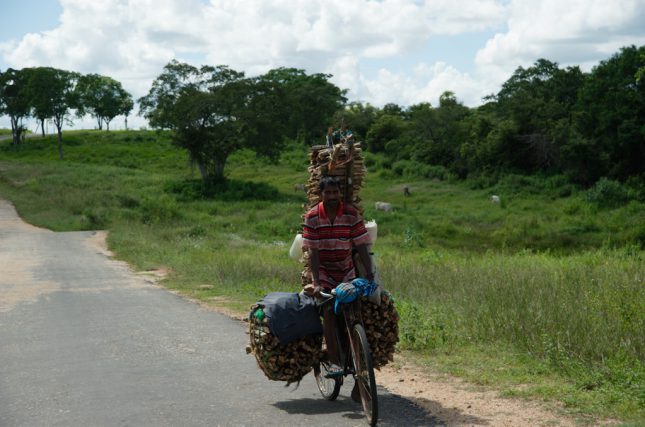
Ein „Holztransporter“ beim Dorf Hijranagar
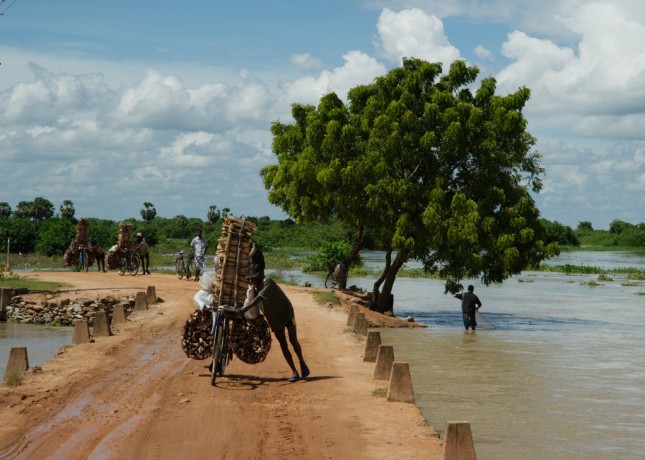
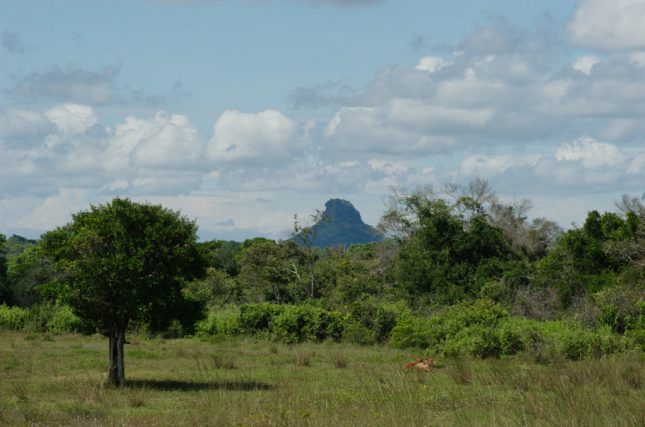
Eine wunderschöne, arme, geplagte, vom Bürgerkrieg sich erholende Landschaft
Der Dank der „Beneficeries“ und auch unser Dank (von EMAS) geht an die vielen Sponsoren die dies möglich gemacht haben! – We’d like to express our sincere thanks to all of our donators
Have a look on our work
Unsere Arbeit im Bild
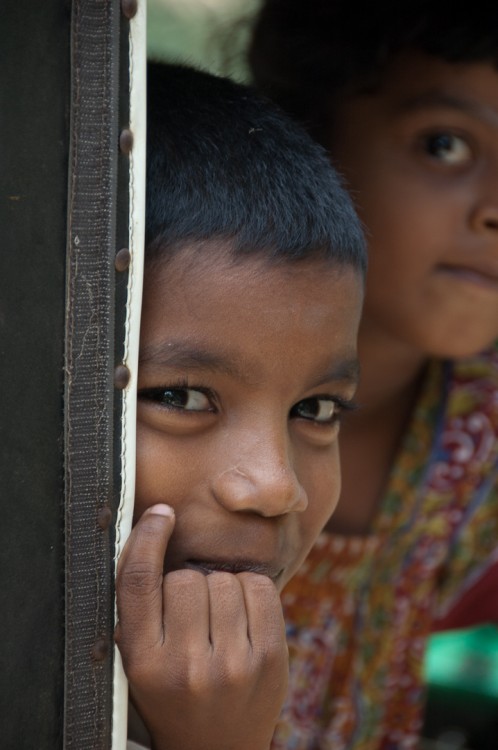
Young boys are watching our work……
….. with scepticism
Water for the family? Just a hole in the ground!
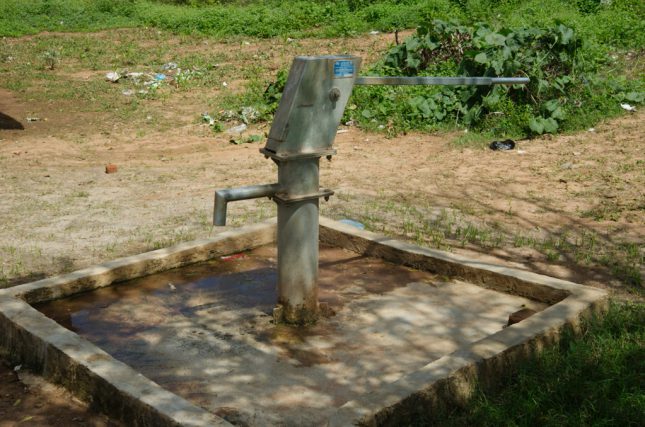
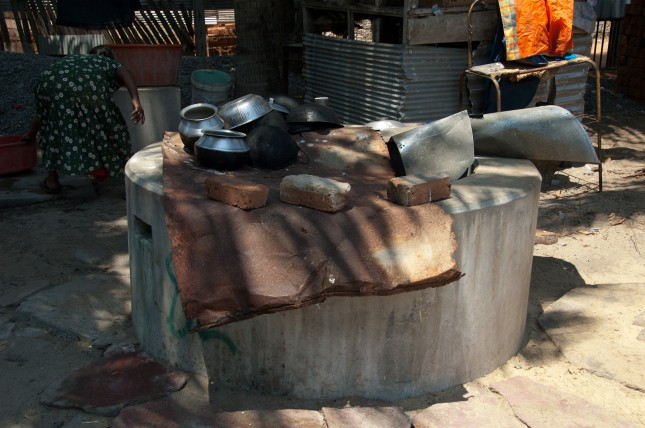
Dug Well with highly hygienic riscs – Offener Brunnen mit hohem hygienischem Risiko
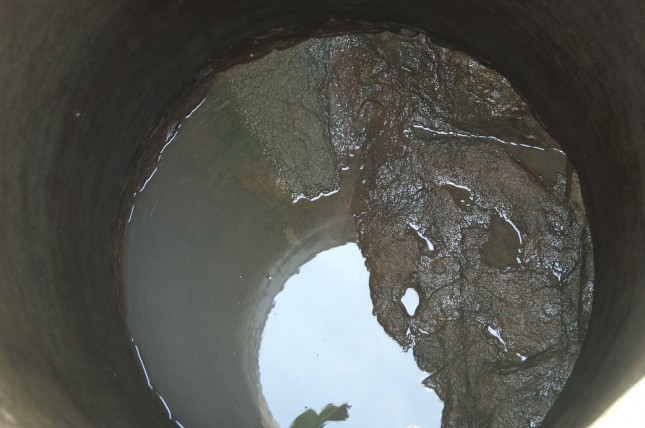 .. and more open dug wells with highly hygienic risks,……
.. and more open dug wells with highly hygienic risks,……
…or an EMAS ferroconcrete tank……..
………with hygienic, clean and drinkable water……
The families are happy with their EMAS Rainwater Harvesting System
